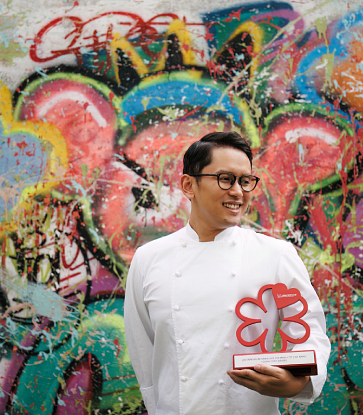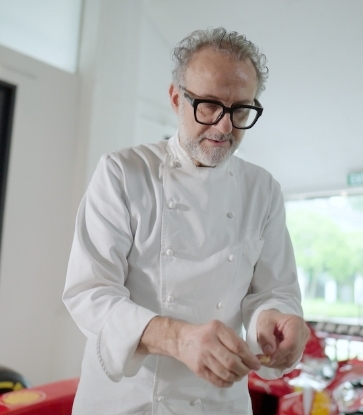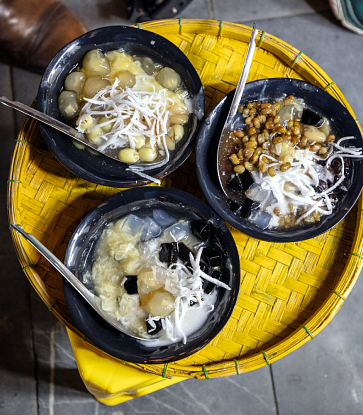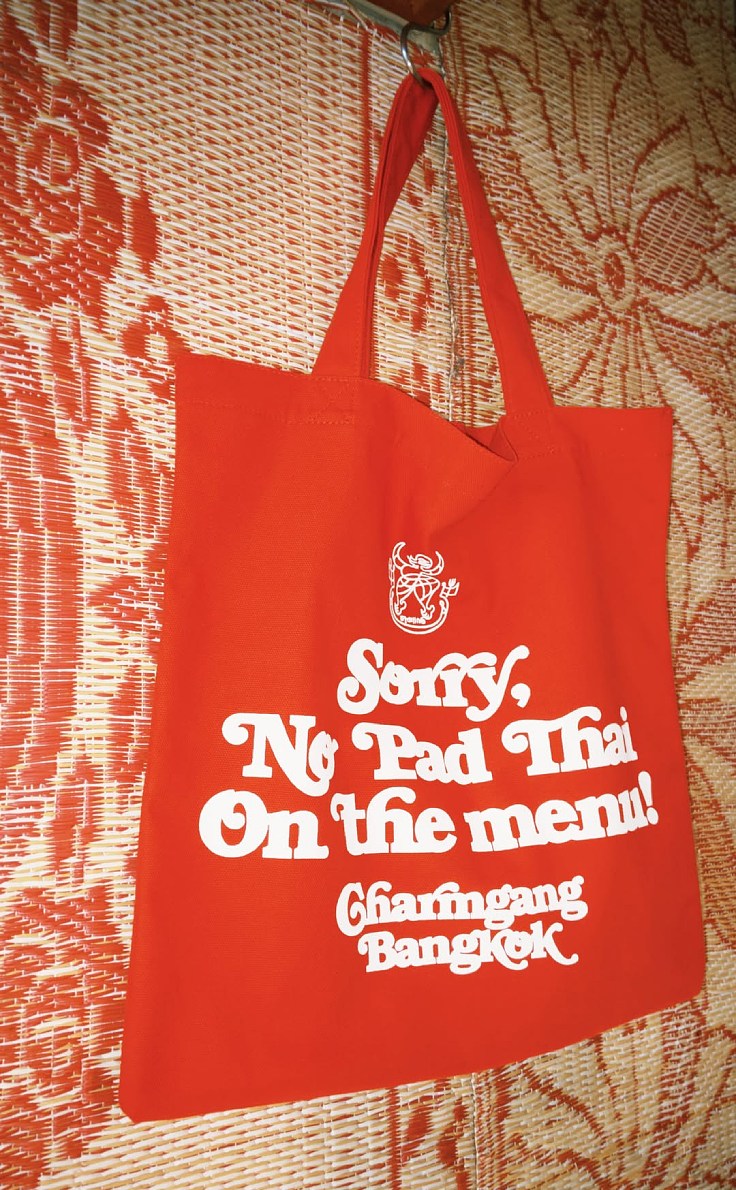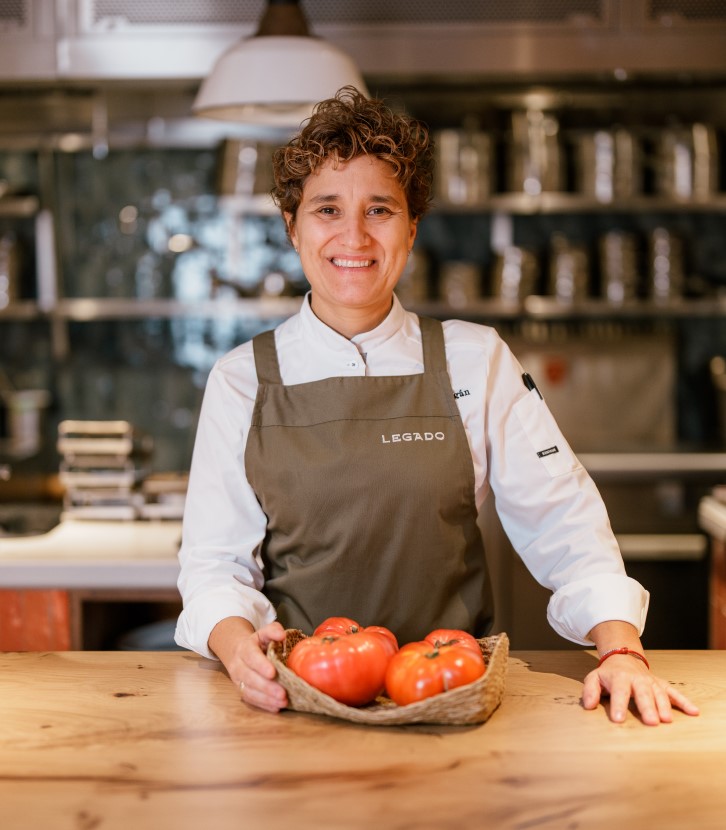Vietnam is proving to be a hotbed of world-class dining creativity and it is no surprise that the launch of its first MICHELIN Guide took place back in 2023. Increasingly, fine dining and sustainability are becoming more commonplace concepts that a new generation of restaurateurs is embracing, as they aspire to showcase how Vietnamese gastronomy too can emit international appeal.
“Ten years ago, this conversation would never have happened,” laughs Chef Quang Dung, chef and founder of Chapter, a MICHELIN-selected restaurant and Habakuk, a Bib Gourmand establishment in the MICHELIN Guide Vietnam 2023 and 2024. “Ten years ago, nobody would have cared if you were a chef—they only cared if you were a banker. It barely began five years ago, but now we have so many wonderful chefs who have really pushed themselves and Vietnamese [people] are beginning to become aware of fine dining. The attention we are beginning to have right now is amazing with Michelin coming over to Vietnam. People are now becoming more aware of what goes into their food, who cooks it, the personality and skill set that goes into their food.”

A blend of Vietnam and the world
A look into the 33-year-old’s background explains how his flagship restaurant in Hanoi, Chapter, is an intriguing amalgam of cuisines, techniques, and styles from Vietnam and around the world. “I was a Vietnamese in England, cooking in a Japanese restaurant owned by a Chinese person,” he says of his beginnings. Although Truong was sent to England to study to become a banker, his part-time stints working at restaurant kitchens made him realise that he wanted to be a chef.Despite his lack of any classical training, his shifts in a varied number of kitchens in both England and Vietnam—ranging from restaurants, and hotels to school cafeterias—became the foundation for his own restaurant aspirations.
Come 2015, Dung quit his main job in banking and second job as a line cook at French Grill at JW Marriott Hotel Hanoi to open his own restaurant. His dream of opening a fine dining establishment finally came true when he launched Chapter in 2021, a name derived to honour both a new chapter in his life, as well as his last name which translates to chapter in English. Set in a six-storey building that used to be a hotel in the Old Quarters, Dung’s restaurant surely evoked luxury — but also challenged people’s interpretation of luxury.

Innovative nose-to-tail cuisine
Serving a seasonal, 10+ tasting course featuring contemporary Vietnamese cuisine, the dishes are all crafted with Vietnamese, molecular, French, Nordic and English influences. However, grilling and working with the flame are the crowning trademarks of Chapter. Pushing past the traditional perception of luxury, Dung shares how he has long been fascinated with cheap cuts and cheap foods, which provide richer flavours than pricey cuts. “It’s much more fun to cook with,” he speaks of ox tail, a part he once served to Prince William when the royal was visiting Vietnam. “There are a million things you can do with an ox tail, but with a filet mignon, you just roast it. Who judges what is the best cut of meat anyway? Lobsters were once fed to prisoners in America. In Vietnam, the most expensive cut of beef is not filet mignon—it is the shin, which I don’t think tastes any less good.”An example of his culinary innovativeness is his past creation that uses the unusual pig’s trotter. Giving it a luxe treatment, the feet are stuffed with foie gras terrine and Vietnamese pork charcuterie, before it is centrally plated inside a ring of pickles and Vietnamese herbs. “I’ve always preferred the odd bits,” Dung smiles. “And I’m Vietnamese, which means we eat from nose to tail. It means we throw nothing away.”

Sophistication from smoke
The thought of grill and smoke may bring to mind a graceless ruggedness, but the interiors of Chapter are anything but. Upon entrance on the ground floor, guests will first see an open kitchen that looks rather glamorous, despite its use of bricks, textured stone and sintered stone. “The kitchen is on the ground floor because I want the chefs to be the first people to greet the customers,” he explains. “It’s the heart and soul of the restaurant. You can feel the fire. We used sintered stone for our kitchen top. It’s a perfect way to hide the equipment.”Understated elegance continues into the dining space, which reflects the primal flame-grilled cuisine by using a grey palette. Raw iron, rough wood and textured stone are the main elements of the space, but curvy steel fixtures on the ceiling add a sleek accent to the atmosphere. “That’s to represent how smoke comes out from primitive cooking,” says the chef of the interior design. “I’m a bit rustic and we wanted to have that masculine and hard look to it, but even so, the architect blended it well with curves so it looks softer and more sophisticated.”
With interiors designed to reflect his human qualities—masculinity, creativity, and sophistication—the latter is best showcased through Chapter's use of sintered stone tabletops. “Wood never has that kind of reflective quality,” he shares how a dazzling effect can be created by simply choosing the right materials. “We use a lot of sintered stone in our restaurant for the lighting experience, be it ambient light or spotlight. When the spotlights shine onto the table, it creates a kind of natural filter. That’s why when you see pictures [on social media], some pictures by our guests are even better than our own!”

The real definition of luxury
Surely, there are certain boxes to check when it comes to an upscale fine dining experience, but when it comes to defining luxury, the chef believes luxury is time well spent. “Restaurants are not just about eating the most expensive cut of beef—restaurants sell an experience. If you come to Chapter, what I care about most is how well you’ve spent your time with us. We have no idea who comes in, but the fact that they’ve chosen us means we have to try our best to make sure their time is well spent.”There is no shortage of Vietnamese talents showcasing a commitment to excellence, be Chapter or brands like Vasta Stone, a proudly Vietnamese sintered stone brand made with remarkable craftsmanship, artistry and skill, while using state-of-the-art manufacturing with the highest level of eco-friendliness.

Like the passionate chef and the frontline of Vietnamese chefs, Vasta Stone, too, does not shy away from tirelessly merging creativity, and innovation with traditional techniques to create something truly unique and captivating. “The culture of fine dining chefs is completely different to that of a hotpot chef,” says Dung. “I don’t see this as just work, but creating art. The main difference is I work at a place where people actually want to do this, not because they have to.”
Vasta Stone, a leading luxury sintered stone brand in Vietnam and an official partner of the MICHELIN Guide Vietnam, is known for its innovation, sustainability, and craftsmanship. Their sintered stone worktops are visually striking, durable, anti-scratch, and easy to clean. Combining exquisite Italian design with traditional techniques, Vasta Stone creates products that suit luxurious bathrooms, modern kitchens, and outdoor spaces. With a focus on eco-friendliness and high-end luxury, the leading sintered stone brand exemplifies quality and environmental responsibility, making it the top choice for premium sintered stone products—proudly made in Vietnam.
READ FURTHER: Recasting Vietnamese Identity: Sam Tran, Local Craftsmanship, and the Dining Experience as a Source of Vietnamese Pride
Illustration image: © Linh Pham/ MICHELIN Guide Vietnam




